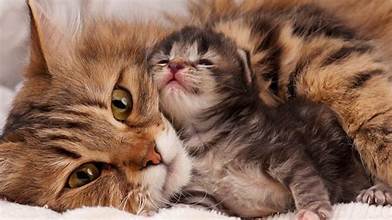A cat can bring companionship and joy, but it’s essential to understand the actual costs associated with cat ownership. A cat’s financial commitment increases over time, from routine veterinary care to food expenses. With a potential lifespan of 15 years or more, the financial commitment is significant. Let’s break down the monetary costs and highlight critical considerations, including pet insurance and emergency care, to help you make an informed decision before bringing a furry friend into your home.
1. Initial Costs of Adopting a Cat
Adoption Fees:
It can range from $50 to $500, which depends on whether you adopt from a shelter or purchase from a breeder. Shelter cats are typically more affordable and come with initial vaccinations and spaying/neutering.
Initial Supplies:
Prepare for costs like a litter box, scratching posts, toys, food and water bowls, and a carrier. Expect to spend around $100 to $300 initially.
2. Routine Veterinary Care:
Vaccinations and Check-ups
Vaccinations:
Routine vaccinations are crucial for your cat’s health. The cost for essential vaccines like rabies, FVRCP (Feline Viral Rhinotracheitis, Calicivirus, and Panleukopenia), and FeLV (Feline Leukemia) can range from $50 to $150 per year.
Annual Check-ups:
An annual wellness exam costs between $50 and $100. At this visit, your vet will assess your cat’s overall health, which is critical for early detection of potential health issues.
Preventative Treatments:
Flea, tick, and heartworm preventatives are also necessary, and they cost around $30 to $100 per year, depending on the brand and type.
3. The Cost of Feeding Your Cat
Cat Food:
The type and quality of food you choose for your cat can significantly affect your monthly budget. A standard dry kibble diet may cost around $10 to $20 per month, while premium or grain-free options can range from $30 to $60 per month. Wet food can add an additional $20 to $40 per month.
Special Diets:
If your cat requires a special diet for health reasons (such as kidney care or sensitive stomach formulas), costs can increase significantly to $50 to $100 per month.
4. Considering Pet Insurance for Your Cat
Why Pet Insurance? Vet bills will quickly add up, especially if your cat faces unexpected health issues. Pet insurance can help cover the costs of accidents, illnesses, and even some routine care like vaccinations and check-ups. This can significantly reduce your out-of-pocket expenses and provide peace of mind.
Monthly Premiums:
The average monthly premium for cat insurance ranges from $10 to $40, depending on the plan and the cat’s age. Some plans cover routine care, like vaccinations and check-ups, while others focus solely on accidents and illnesses. Understanding the differences between these plans can help you choose the most suitable one for your cat’s needs and your budget.
Is It Worth It? While pet insurance does come with a monthly cost, it can be very helpful in managing unexpected expenses, like surgery or emergency treatment.
5. Emergency Care:
Preparing for the Unexpected
Emergency Vet Visits:
Cats can experience emergencies like ingesting toxic substances, injuries, or severe illnesses. Depending on the severity of the issue, a single emergency vet visit can cost from $300 to over $1,000.
Surgical Procedures:
For more severe health problems, surgical costs can range from $500 to $2,000 or more.
Building an Emergency Fund:
Even with pet insurance, setting aside a small emergency fund of $500 to $1,000 for unexpected vet visits is wise. This can help ensure you’re prepared for surprises without straining your finances.
6. Commitment Beyond Financial Costs:
Time and Attention: Cats require time, love, and care. From daily feeding to regular playtime and socialization, it’s essential to ensure you have the time to commit to your feline friend. This responsibility is a key part of the commitment you make when you decide to bring a cat into your home.
Grooming:
Depending on the breed, your cat may need regular brushing to maintain a healthy coat and prevent shedding. Grooming tools and occasional professional grooming sessions can cost around $20 to $70 per session.
Enrichment and Comfort:
Investing in scratching posts, toys, and cozy beds helps keep your cat mentally stimulated and comfortable. You could spend around $50 to $150 annually on enrichment items.
Final Thoughts: The Real Cost of Cat Ownership
Owning a cat is a rewarding experience, but it is also a lifelong commitment for you and your cat. However, it comes with responsibilities that go beyond cuddles and purrs. Understanding the full range of expenses—from routine vet care to emergency costs—is crucial. It ensures that you are financially prepared for your new feline friend. Proper preparation and planning allow you to provide your cat with a happy, healthy life while managing ownership costs.





Pingback: How To Know What Your Cat’s Meows, Purrs And More Really Mean - Positvley Pets